I attended the sheet metal Sportair Workshop last weekend in Oshkosh. I took the composite workshop a couple of years ago, so now I've spent a weekend with two different construction techniques.
The project in this workshop is to build piece that is similar to the section of a wing. It has a wide front spar, a narrow rear spar, one rib at each end, it's riveted together, and it has an inspection plate on the bottom. The top surface has flush rivets, whose heads are level with the surface:
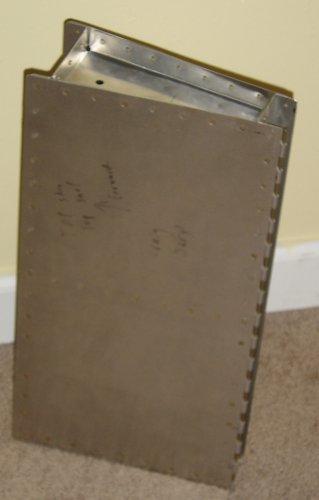
The bottom surface has universal head rivets, which are rounded but the heads stick up above the surface:
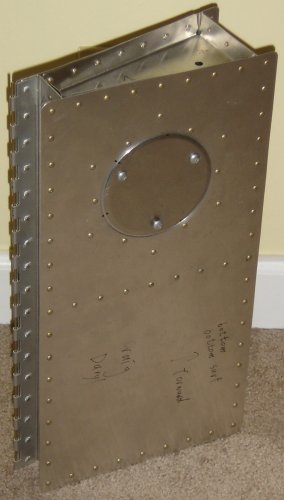
The round plate with three screws is the inspection panel. These are put in aircraft so that internal moving parts (like control linkages and pulleys) can be inspected and lubricated during the annual inspection that all aircraft must undergo.
Here area couple of photos of the flush rivets with a quarter for scale. Flush rivets are used in aircraft that go fast to minimize drag. Flush rivets are the little round things that you see around the door of an airliner as you get on board.
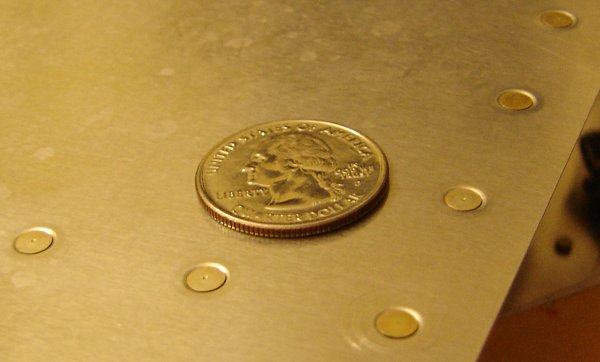

I took this workshop to practice the techniques and to get a feel for whether I liked doing them for a while. The answer to the second is yes, I think I could do this sort of thing long term. Here are a couple close-up photos of universal-head rivets. This first rivet is a good one; the factory head is on the left and the formed head (formed by squishing the rivet in a squeezer) is on the right, and are directly across from each other.
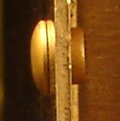
Here's another rivet where they're very skewed from each other. This happened because I didn't have the rivet squeezer perpendicular to the surface of the metal. It looks like it was tilted to the left at the top from this point of view; the formed head on the right is squished down and the manufactured head is deformed up. This is a much weaker connection between the two sheets of metal than the rivet above.
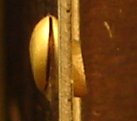
Aluminum sheet metal designs have a large margin, only (for instance) 75% of the rivets in some designs need to be good for the structure to strong enough to meet its design criteria.